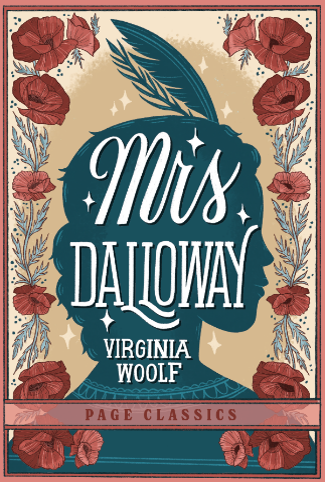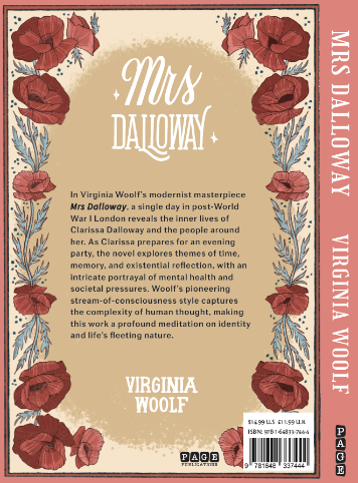Mrs. Dalloway Virgina Woolf
- Normaler Preis
- $7.50 USD
- Normaler Preis
-
$14.99 USD - Verkaufspreis
- $7.50 USD
- Grundpreis
- pro
Type : Fiction
SKU : 9781648337444
Verfügbarkeit für Abholungen konnte nicht geladen werden
Virginia Woolf’s Mrs. Dalloway (1925) is one of the defining works of modernist literature, capturing a single day in the life of Clarissa Dalloway, a woman preparing for a high-society party in post-World War I London. Yet, what seems on the surface like an ordinary day of party-planning becomes a profound exploration of memory, identity, and the complexities of time, mental health, and personal choices. Through a stream-of-consciousness narrative style, Woolf delves into the internal lives of her characters, unraveling layers of their pasts, relationships, and existential struggles.
Summary and Structure
The novel is set on a single day, June 19, 1923, and the plot follows Clarissa Dalloway as she goes about the seemingly mundane task of preparing for a party that evening. However, as she makes her way through the streets of London, buying flowers and preparing her home, her mind constantly drifts to thoughts of the past—her youthful desires, her marriage to the reliable but dull Richard Dalloway, and the relationships she had with other people, most notably Sally Seton and Septimus Warren Smith, a war veteran whom she never meets but whose tragic story runs parallel to hers.
Woolf’s use of stream-of-consciousness allows readers to enter the minds of multiple characters, exploring their fragmented thoughts, memories, and emotions. Clarissa’s interiority is at the forefront, but we also hear from characters like Septimus, the war-tormented veteran, and Sally, the former lover Clarissa sometimes wonders about. The story is filled with moments of quiet introspection, where the boundary between the external world and internal musings blurs.



